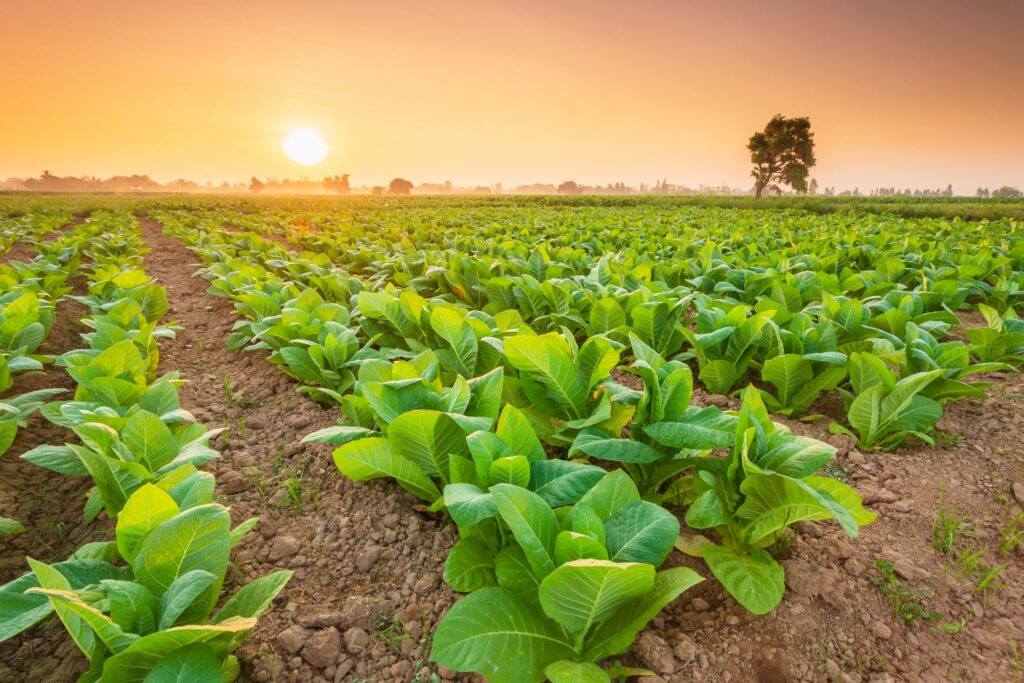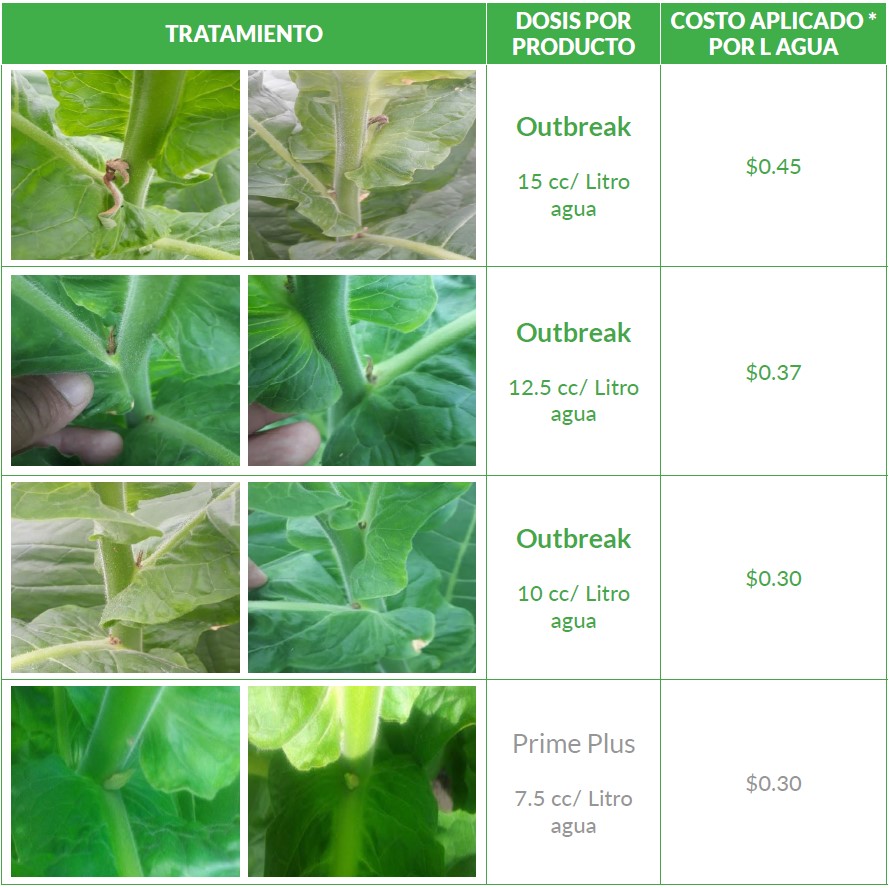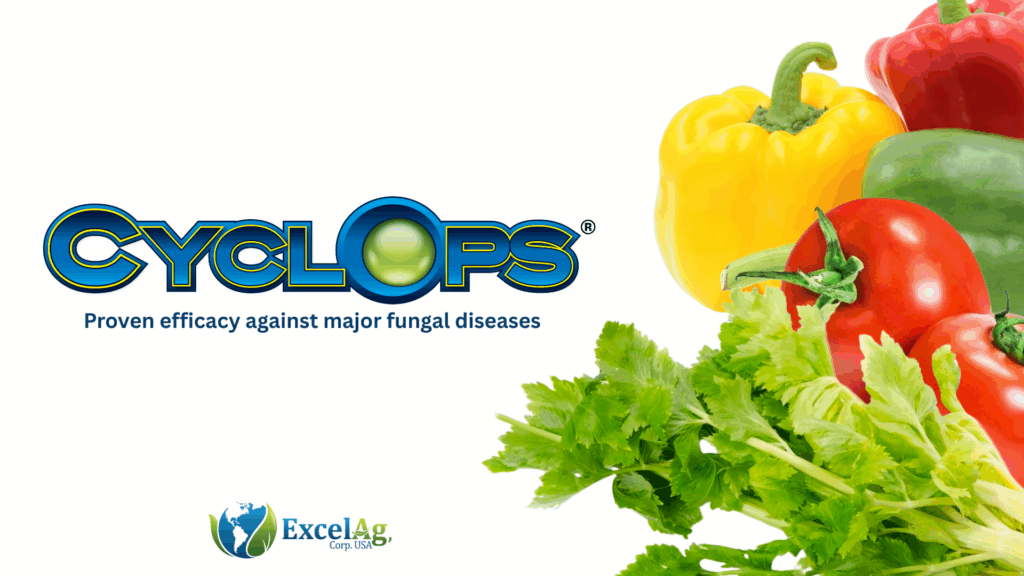Date: February, 2017
Goal: Determine the efficacy of Outbreak to inhibit tobacco buds
Location: Esteli, Nicaragua
Crop: Tobacco

Introduction
Outbreak is a soluble organic liquid compound of vegetable origin that acts by contact, inhibiting the growth and development of the buds or shoots of all plants. It can be applied to any variety of tobacco without altering its organoleptic characteristics
Outbreak benefits
It is an organic product
Helps reduce chemical load that synthetic or conventional products provide
Provides effective and rapid inhibition of buds and shoots
Does not require re-entry period (REI) or pre-harvest intervals (PHI)
It does not affect the beneficial fauna in treated crops
Significant cost-benefit ratio
Action mode
Outbreak acts by contact inhibiting the growth and development of the buds or shoots of all plants. The essential oils that are extracted from the good grass (Mentha spicata) and peppermint (M. piperata) are useful to prevent the growth of shoots or buds. This mixture of aromatic components contains mainly carvone (M spicata) or menthol and mentone (M piperata). Direct contact of the product and the vapors physically damage the sprouted tissue.
Treatment
Three Outbreak tests were carried out with the following doses: 10 cc, 12.5 cc and 15 cc per liter of water, compared to the commercial control in a dose of 7.5 cc per liter of water.
Results

* Applied cost calculated based on local market conditions at the time of the study. (Nicaragua)
Conclusions and recommendations

The six Outbreak treatments had an effect on the inhibition of the buds in Tobacco, managing to observe this effect from 3 days after the applications.
As we can see in the photos presented Outbreak at 10, 12.5 and 15 cc per
liter of water has better efficacy than the conventional Prime Plus product at a dose of 7.5 cc / liter of water, 21 days after application.
- Do not apply to diseased plants
- Prepare the mixture immediately before use and keep it in the sprayer tank.
- Avoid getting the broth into contact with the underside of the leaf, as it is sensitive and therefore susceptible to burning.
Gerardo Meléndez, Agricultural Engineer ExcelAg Corp.
Email: gmelendez@excelag.com


